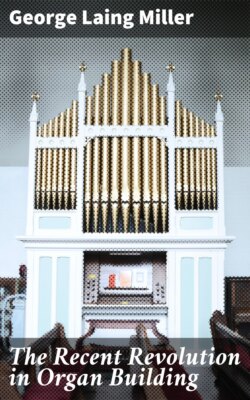Читать книгу The Recent Revolution in Organ Building - George Laing Miller - Страница 3
На сайте Литреса книга снята с продажи.
FOREWORD
ОглавлениеTable of Contents
Some years ago the elders and deacons of a Scotch church were assembled in solemn conclave to discuss the prospective installation of a pipe organ. The table was piled high with plans and specifications and discussion ran rife as to whether they should have a two-manual or a three-manual instrument—a Great and Swell or a Great, Swell, and Choir organ. At last Deacon MacNab, the church treasurer and a personage of importance, got a chance to speak.
"Mr. Chairman," said he, "I don't see why we should have a Great, a Swell, and a Choir organ. I think that one organ is quite enough."
Now, Deacon MacNab was a master tailor, and a good one at that; so the musical man who was pushing the thing through appealed to his professional instincts in explaining the situation by saying:
"Surely, Mr. MacNab, you would not say that a man was properly dressed with only a coat on! You would expect him to have on a coat, waistcoat and trousers!" And the day was won for the three-manual organ.
Of course there had been no organ in this church before, or the worthy deacon might have known more about it. If he had read the second chapter of this book, he would have known all about it. The following pages have been written with the idea of helping those who may be placed in a similar position; who may be called upon to decide the serious question of the purchase of a new organ for their church, town hall, or an auditorium, or the rebuilding of the old one now in use; who are distracted by the conflicting plans and contending claims of rival organ builders; who are disinclined to rely upon so-called "expert" opinion, but wish to look into these things for themselves and intelligently purchase an instrument which is thoroughly up-to-date in every particular, which will not drive the organist to the verge of profanity every time he plays upon it, and will not prove a snug source of income to its builders—for repairs.
The organ-student, the amateur, and eke the professional organist, will also find much here that will interest them and lead to a better understanding of the instrument.
The revolution in organ-building herein described has for the most part taken place under the personal notice of the author, during the last fifty years. The organists of a younger generation are to be congratulated on the facilities now placed at their disposal, mainly by the genius and persevering efforts of four men—as hereinafter described.
